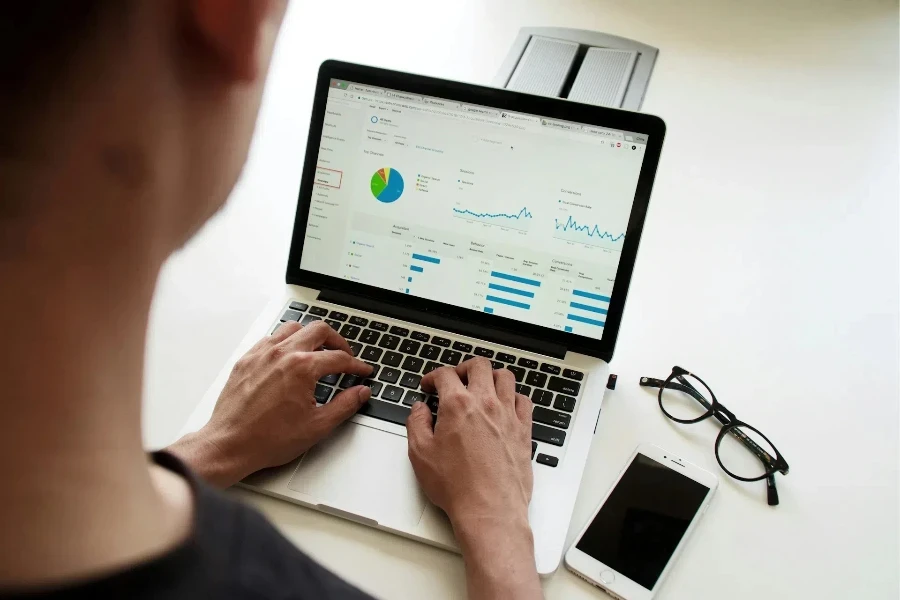To make a business thrive, sellers must understand all of their financial resources properly, and this is where understanding current assets comes into play.
Current assets are crucial as they represent the readily accessible resources for daily operations, whether ensuring smooth cash flow, maintaining relationships with suppliers, or growing the business.
Understanding current assets, why they matter, and what difference they can make in one’s business can help business owners to thrive in today’s competitive marketplace.
So read on for everything you need to know about current assets in 2025!
Table of Contents
What should one know about current assets?
What types of current assets sellers should be aware of?
Why do current assets matter for businesses?
How to calculate current assets & where this can be used?
The bottom line
What should one know about current assets?
Current assets are the assets that can be converted into cash within a year or operating cycle. Non-current assets are those that can’t be converted into cash quickly; rather, they are sold for less than the actual purchase price.
To understand this, imagine a business as a glass of water. Here, the current asset is available water that can be poured out easily whenever needed. In comparison, the glass itself is a non-current asset.
It can be solid and sturdy, holding everything, but it can’t be used as quickly as water can. Also, as per this study, non-current assets are important for long-term sustainability, which requires careful management.
Current assets include the money customers owe, cash in the bank, products that can be sold, or investments, which can offer a quick cash reserve and help manage short-term operations.
What types of current assets sellers should be aware of?

While the most obvious type of current asset is cash, it is not the only one. Sellers should also consider these current assets:
Cash & cash equivalents

Cash is reserved and easily convertible, short-term, and the most liquid asset. It helps cover a business’s immediate expenses, such as running a marketing campaign or handling supplier payments. Sellers can consider investing in cash management solutions to track and optimize liquidity.
Accounts receivable
These are business outstanding debts, IOUs, or expected revenue from customers on credit that will be considered accounts receivable. These are money or payments from clients or customers that sellers have yet to receive.
Inventory

Inventory refers to the products sellers offer, which are listed on the balance sheet as finished goods, supplies, raw materials, and work in progress.
Also, these are the largest components of e-commerce’s current assets, which require organization, as any inventory held for more than a year is a non-current asset.
Marketable securities
Market securities are short-term investments like money market funds, stocks, or government bonds. These are easy to get liquidated to address a business’s financial needs.
Prepaid expenses
Prepaid expenses are those paid in advance and have benefits over time. Examples include taxes, subscriptions, year-long leases, insurance policies, and advertising.
Why do current assets matter for businesses?

For a successful business, current assets play a very important role. These short-term assets help maintain liquidity, ensure the sellers’ smooth operations, and boost their business growth.
However, to understand why they matter, here are a few pointers to keep in mind:
Understanding liquidity & cash flow management
Businesses often have to deal with regular expenses, such as employee wages, supplier payments, or utility bills.
Understanding liquidity and cash flow management can help determine one’s ability to meet all of these short-term obligations.
A healthy level of current assets ensures sellers are making payments on time to avoid operational disturbance.
Having proper inventory management
Inventory management helps sellers ensure optimal stock levels and prevent situations like stockouts and overstocking.
Proper inventory management represents the goods available for sale, ensures access, and helps maintain cash flow and profitability.
Boosting the credibility of a business
Current assets can be used to measure the business’s overall financial health, influencing the investor’s decisions.
Moreover, sellers with strong current assets can position themselves as stable and reliable and gain more credibility.
Creating a safety net for businesses
The current asset helps buffer against unpredictable situations. It also provides a cushion in economic downtime or challenges such as declining sales or disruption in supply chains.
Help in improving financial decisions
Understanding and managing current assets can help business owners access their liquidity ratios quickly and in terms of current ratios.
These are valuable insights that provide better decision-making and strategic planning. Additionally, they provide a detailed analysis of current assets, allowing the sellers to address financial challenges and identify any risks before they escalate.
How to calculate current assets & where this can be used?

After understanding the role of current assets in one’s business, sellers should pay attention to how this can be calculated.
This is done by using a formula that involves summing up all short-term resources. The formula is:
Current Assets – Cash + Account Receivables + Inventory + Prepaid Expenses + Market Securities
To make it easy, the seller can consider an accounting calculator or accounting software for hassle-free management.
Calculating current assets is also helpful in understanding more about the business and the balance sheets.
Liquidity ratios help provide an overview of a business’s financial health. Sellers can understand whether they will be able to meet their short-term financial obligations.
Some of the common types are:
Current ratio
The current ratio or working capital is the ratio of the business’s current assets and current liabilities. These are debts that a seller is required to pay within a year.
The formula is: Current Ratio = Current Assets / Current Liabilities.
Quick ratio
The quick ratio helps understand the company and how well it can meet its financial obligations using the most liquid assets.
Also, it shows the repayment capacity of the business. These are considered assets that can be collected in a shorter period of time; they mostly include cash or assets that can be converted into cash within 90 days.
The formula is: Quick Ratio = (Current assets – Prepaid Expenses – Inventory) / Current Liabilities.
The bottom line
When it comes to any business, current assets are the lifeblood. Sellers must have a deep understanding of their current assets so they can ensure smooth operations, stability, and support for their growth initiatives.
By understanding the current asset, sellers can ensure they are well-positioned and able to seize opportunities, meet short-term obligations, and deal with challenges in the business landscape.




